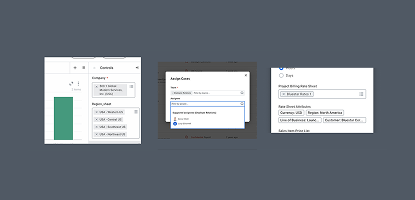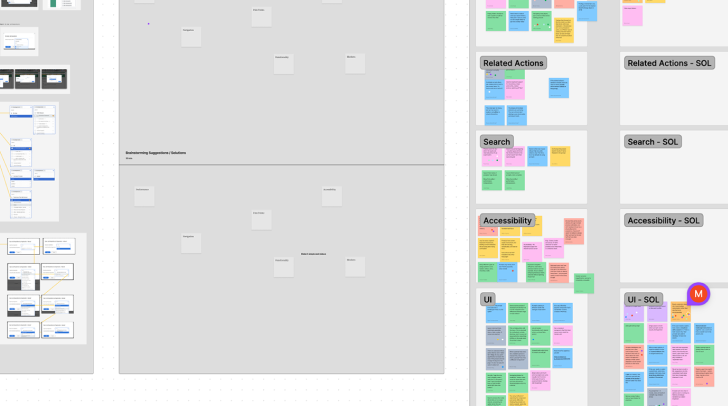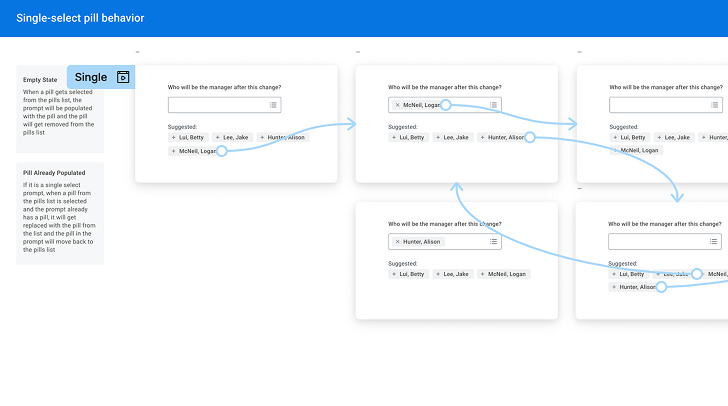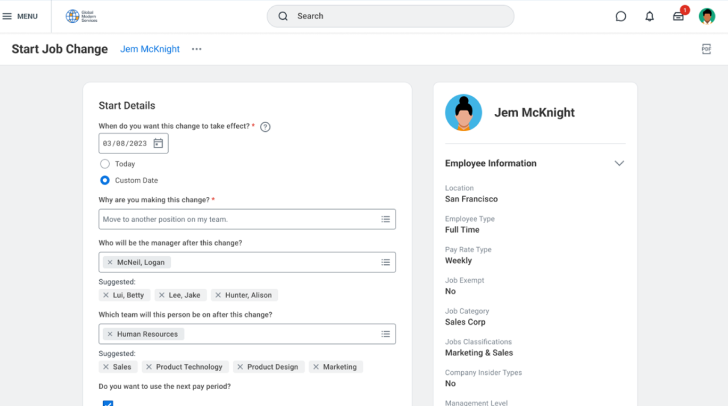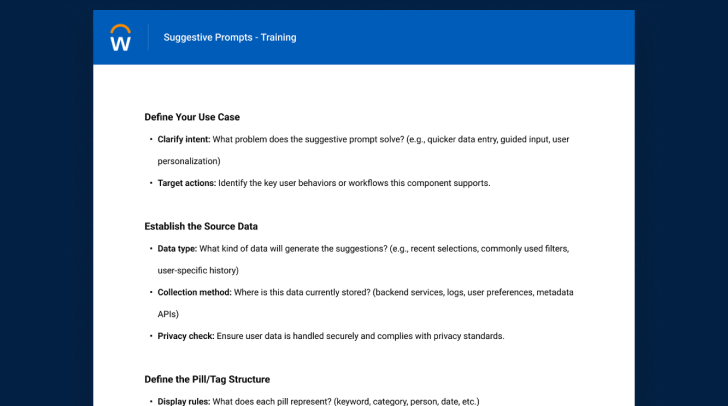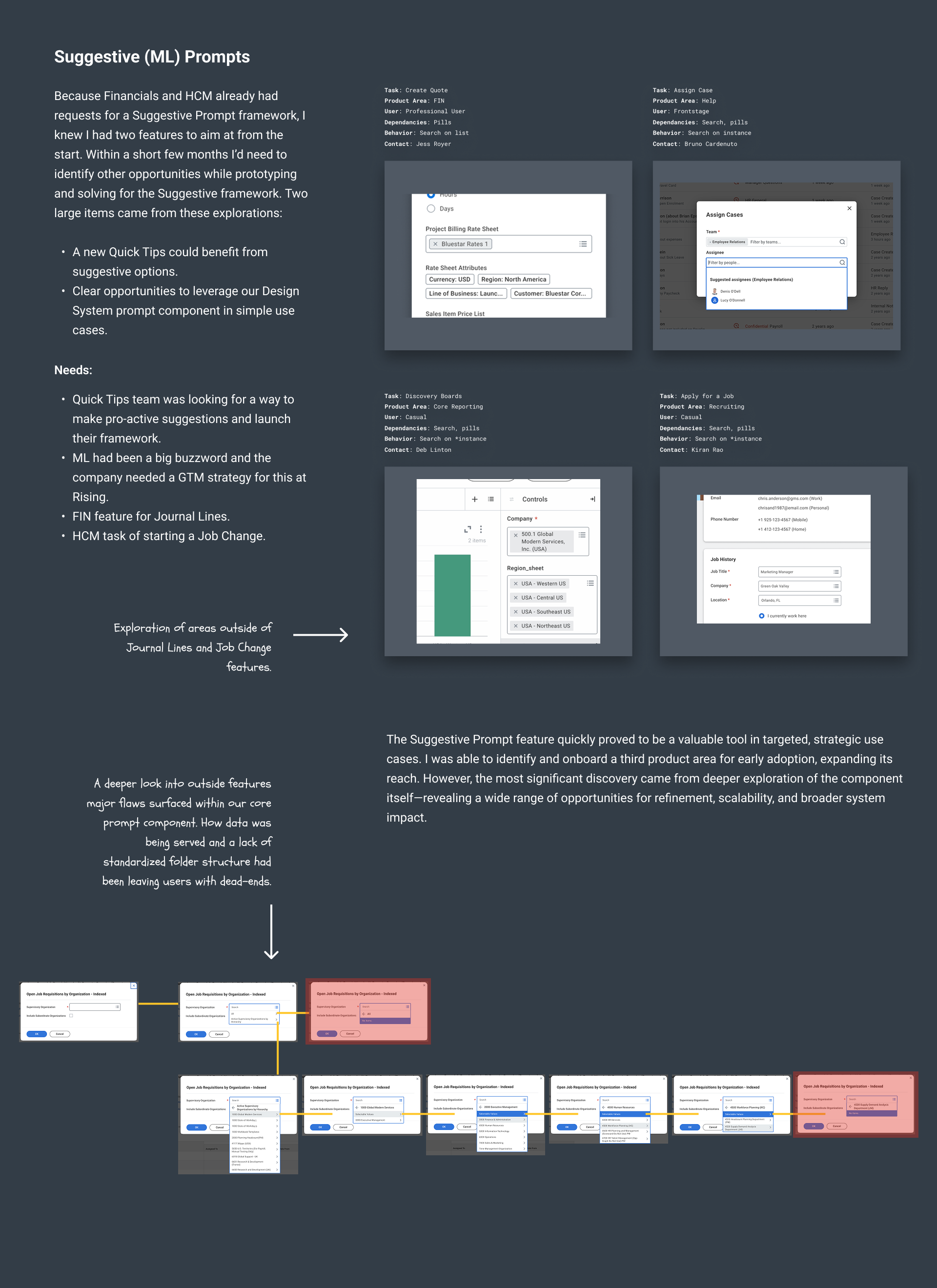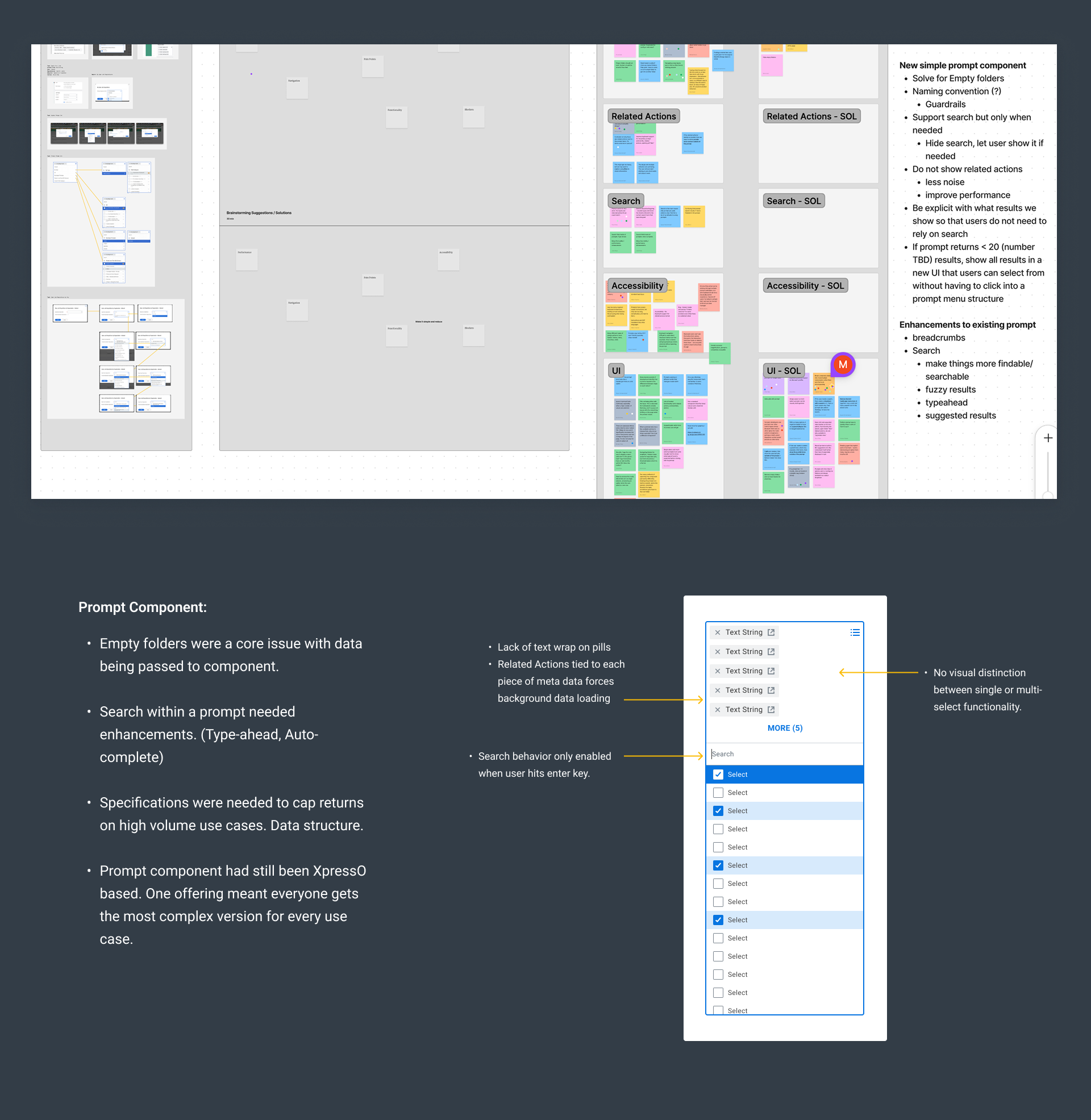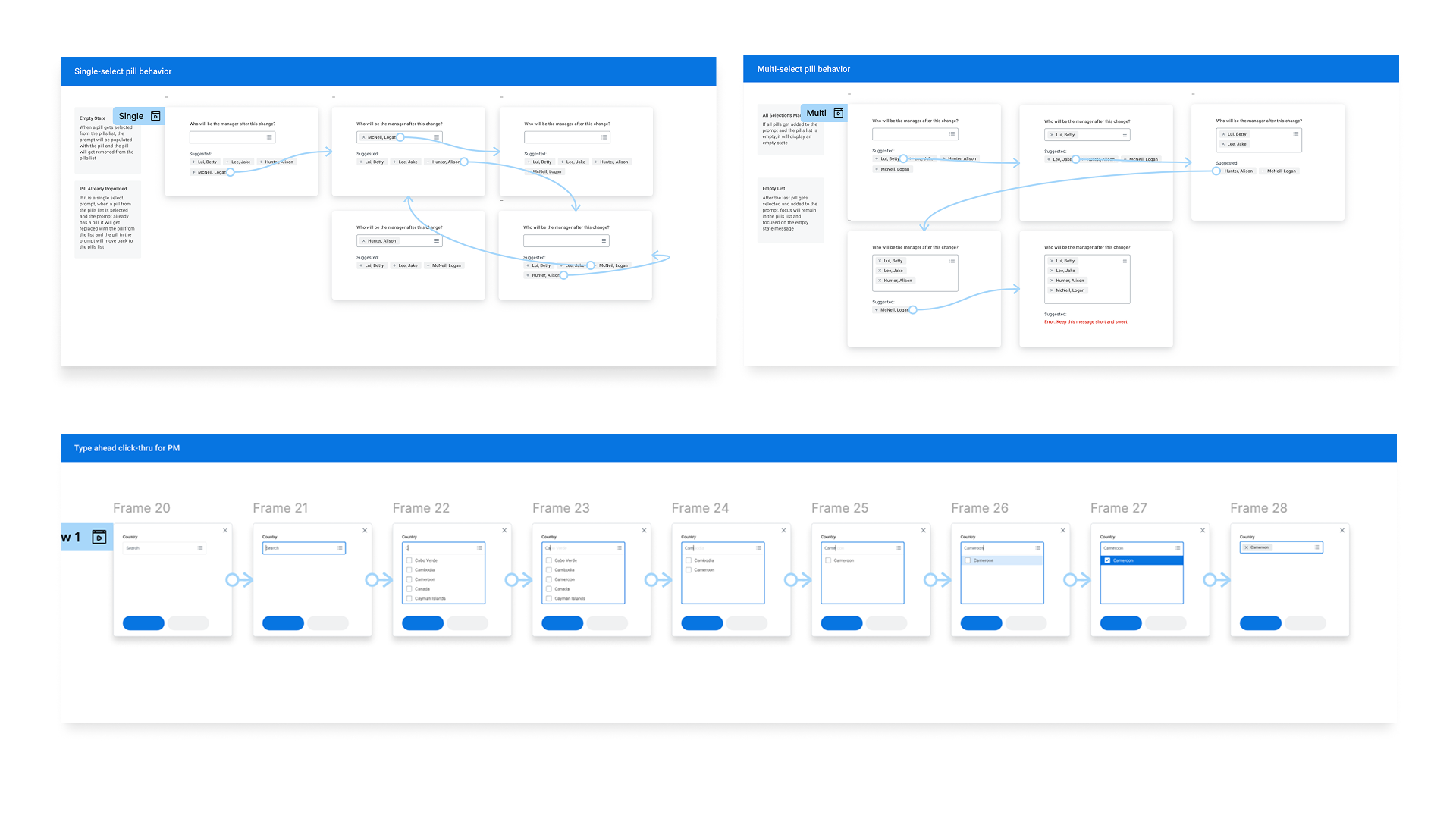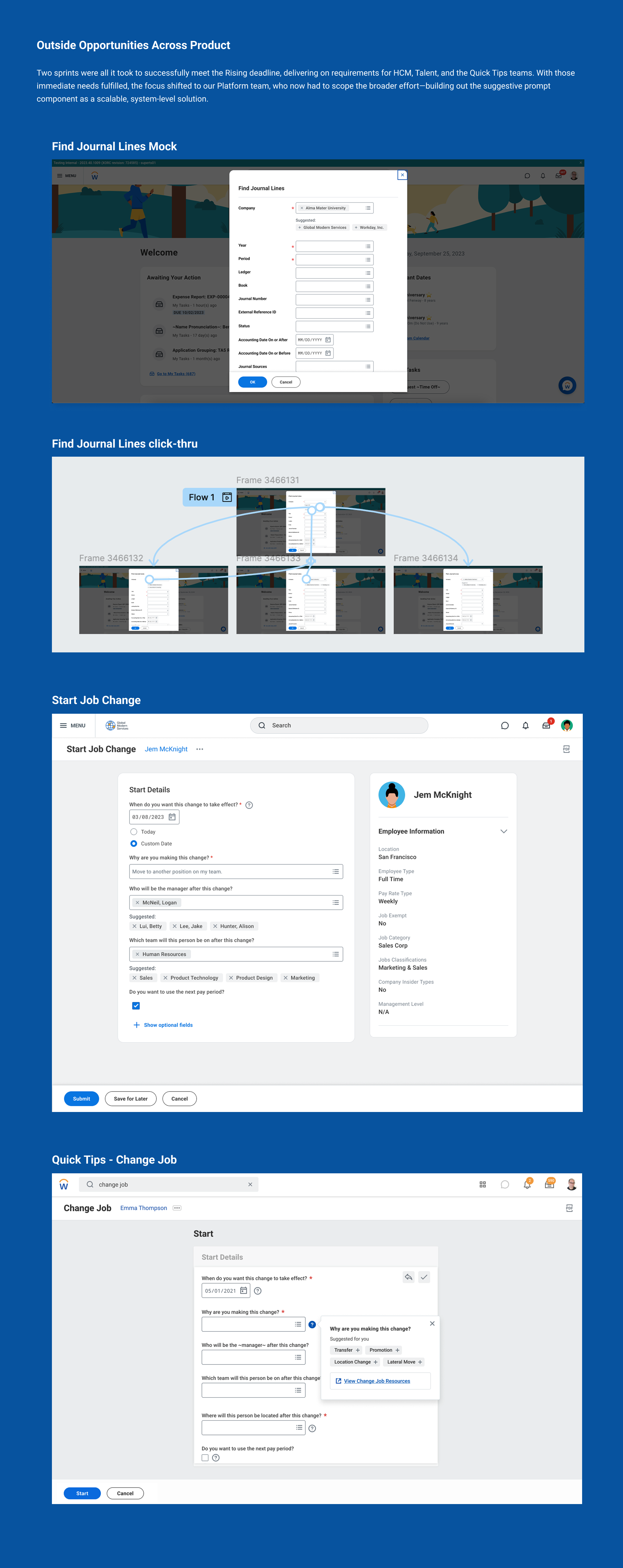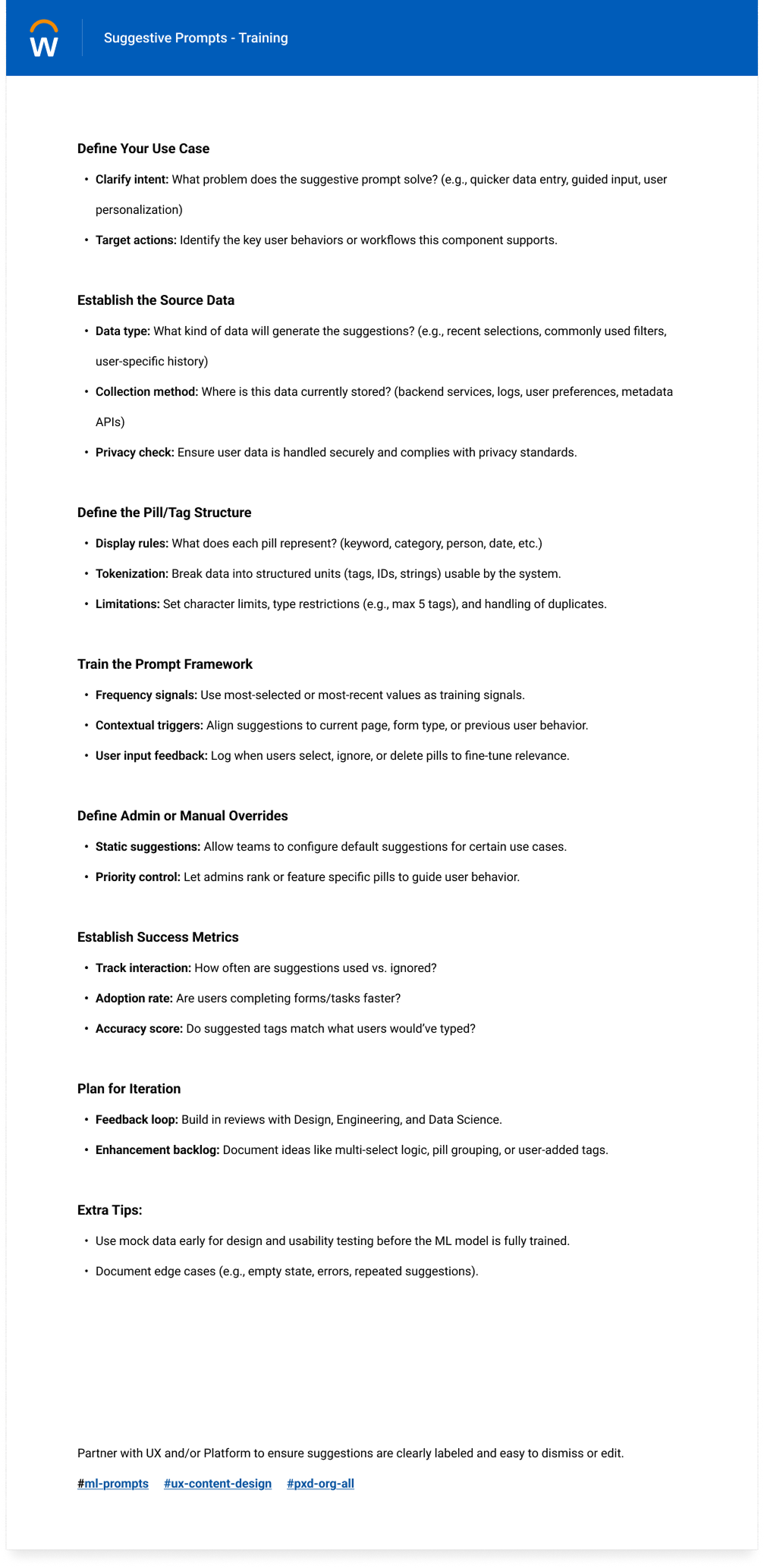Suggestive (ML) Prompts
The development of the ML Prompt framework sparked deeper conversations and uncovered new opportunities related to our prompt component, a foundational UI element used in nearly one-third of all product tasks. This surfaced a broader need to evaluate its role, consistency, and potential for system-wide improvements.

Overview
As the Workday Rising event approached and momentum around machine learning (ML) surged, our team began receiving feature requests from the Financials and HCM product areas around smarter, more intuitive user input. To get ahead of this need, I organized an internal workshop bringing together Product, Platform, and Development stakeholders. The goal was to align on the vision and define early expectations for a suggestive prompt component powered by ML. During the session, we surfaced key use cases, current friction points, and aspirational outcomes.
Based on those insights, I created an initial prototype tailored to both Financials and HCM workflows, illustrating how the prompt could surface relevant suggestions and improve over time with usage and training. The team aligned on a phased approach: Phase 1 would deliver an intelligent, ML-powered prompt with scoped use cases and expected improvement over time. Future enhancements would explore user-level customization and the ability for end users to add their own prompt elements—unlocking deeper personalization and long-term value.
Impact at a Glance
Process
Problem
The Quick Tips team had requests for a Suggestive Prompt framework, knowing I had two features to aim at from the start. Within a short couple of months I’d need to identify other opportunities while prototyping and solving for the Suggestive framework. Two large items came from these explorations:
- Quick Tips team was looking for a way to make pro-active suggestions and launch their framework.
- ML had been a big buzzword and the company needed a GTM strategy for this at Rising.
- FIN feature for Journal Lines.
- HCM task of starting a Job Change.
Approach
The UX approach focused on making the Suggestive Prompt more targeted and efficient was to reuse the pills component to reduce dev effort, pairing walkthroughs with inline guidance for model training, and restructuring the design with Canvas tokens into three tiered offerings to replace the one-size-fits-all pattern.
- A Suggestive Prompt feature had lent itself to be a useful tool in specific cases.
- Utilizing existing pills component could be utilized for surfacing suggestions. Lighter developer effort.
- When considering training of the suggestive model we’d surfaced a walkthrough doc as well as in-line additions.
- As part of the suggestive work, our team could integrate Canvas tokens for full component rebuild and turn it’s one size fits all component into 3 specific offerings.
Project Gallery
